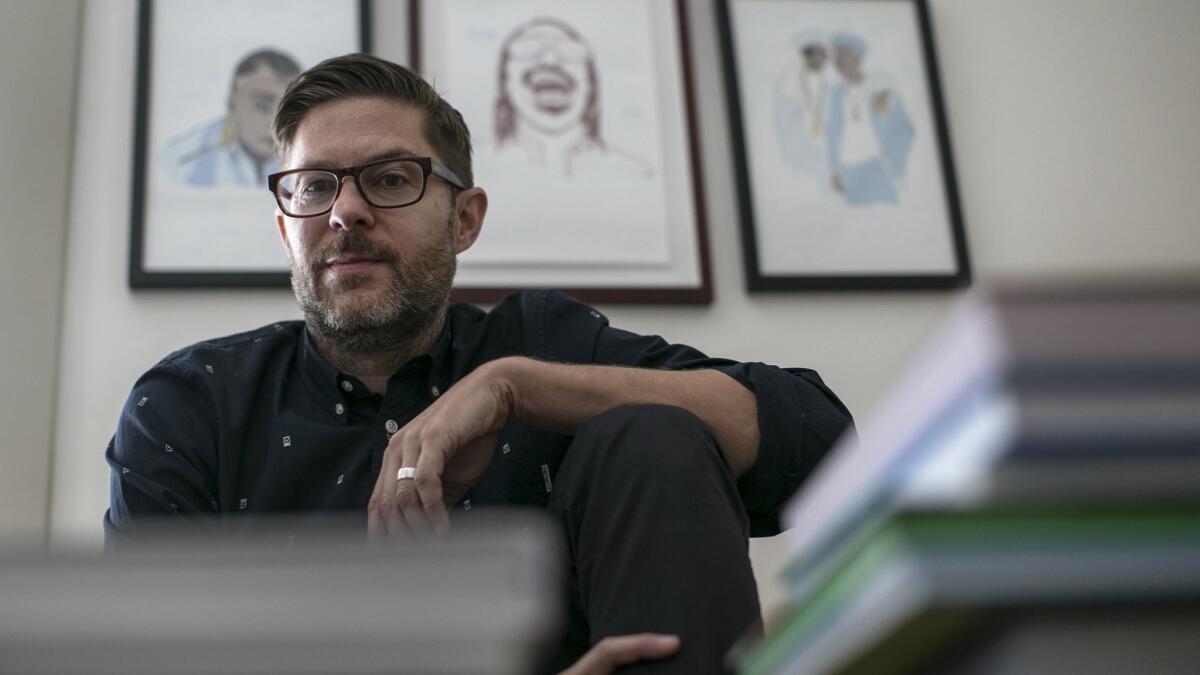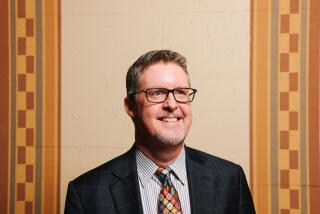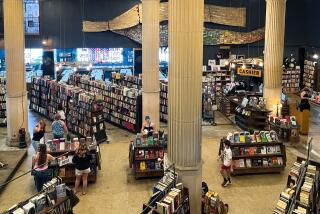What’s in a name? Josh Kun mines the library’s autograph collection for new book and exhibit

In a new age of auto-signatures and celebrity selfies, it’s easy to dismiss autographs as a dying art. But to Josh Kun, author and director of the USC Annenberg School of Communication, autographs are Los Angeles’ richest source of artistic inspiration for his newest project, “The Autograph Book of L.A.”
“While there are big changes in the world of autographs and signatures, what’s behind an autograph and a signature — that desire to be remembered, that desire to remember a time or to remember your own role in culture and society — that doesn’t go away,” Kun said. “We all want to outlive the moment that we’re in.”
On Thursday, the Los Angeles Public Library announced “The Autograph Book of L.A.” as its latest collaboration with the MacArthur Fellow. The project — featuring a new book and tandem Central Library exhibit curated by Kun and City Librarian John F. Szabo — showcases and builds on the autograph collection of eccentric polymath and first L.A. Times city editor Charles Lummis.
The true history of Los Angeles is what’s not in the headlines or what’s not on the marquees. It’s all of the names … of everyday people.
— Josh Kun
“The Autograph Book of L.A.” is the third collaboration between Kun and the L.A. Public Library documenting the city’s history. He previously published “Songs in the Key of L.A.,” tracking L.A.’s legacy through the compositions of local musicians, and “To Live and Dine in L.A.,” documenting the town’s ever-changing tastes via the Menu Collection. When the library approached him again, the Autograph Collection sparked his interest.
“I just thought, at this moment in L.A.’s history, and given some of the urgencies and crises and cultural and social shifts going on in the city, it was the right time to think about questions like, whose names are we asking for autographs?” Kun said. “Whose names should be remembered?”
In his book, Kun examines the city’s collective memory through the autographs, drawings, letters and poems that make up the collection, plus some fresher signatures penned by community members who participated in the library’s 2018 Autograph Day. The book details the evolution of the L.A. signature, from classic penmanship to spray-painted graffiti tags — paired with content from L.A. graffiti artist Chaz Bojórquez.
My hope is that this book and this project gets people to think about how memory works in a city that is always trying to erase itself.
— Josh Kun
“Street art and murals that are present in the book are not there to make an argument one way or another about graffiti and tags, but to actually look at what graffiti and tags have historically meant and symbolized,” Kun said. Street art showcases “the desire for communities and individuals who have been left out of dominant narratives, who have been pushed out of recognition, who have been made to feel absent and invisible, who used everything from tar and candles to aerosol spray cans to felt-tip markers to sign their names on the pages of the city that they want to be seen by.”
Visitors to “The Autograph Book of L.A.” exhibit will also have firsthand access to a “tightly curated, smaller set” of the collection’s materials, featuring names from John Quincy Adams and Helen Keller to Norman Lear and Fernando Valenzuela. Doors will open to the public Sept. 26 at the Central Library’s First Floor Galleries, and event programs related to the exhibit have yet to be announced.
“The true history of Los Angeles is what’s not in the headlines or what’s not on the marquees,” Kun said. “It’s all of the names and all of the messages … of everyday people. That’s what makes Los Angeles. So my hope is that this book and this project gets people to think about how memory works in a city that is always trying to erase itself.”
More to Read
Sign up for our Book Club newsletter
Get the latest news, events and more from the Los Angeles Times Book Club, and help us get L.A. reading and talking.
You may occasionally receive promotional content from the Los Angeles Times.






